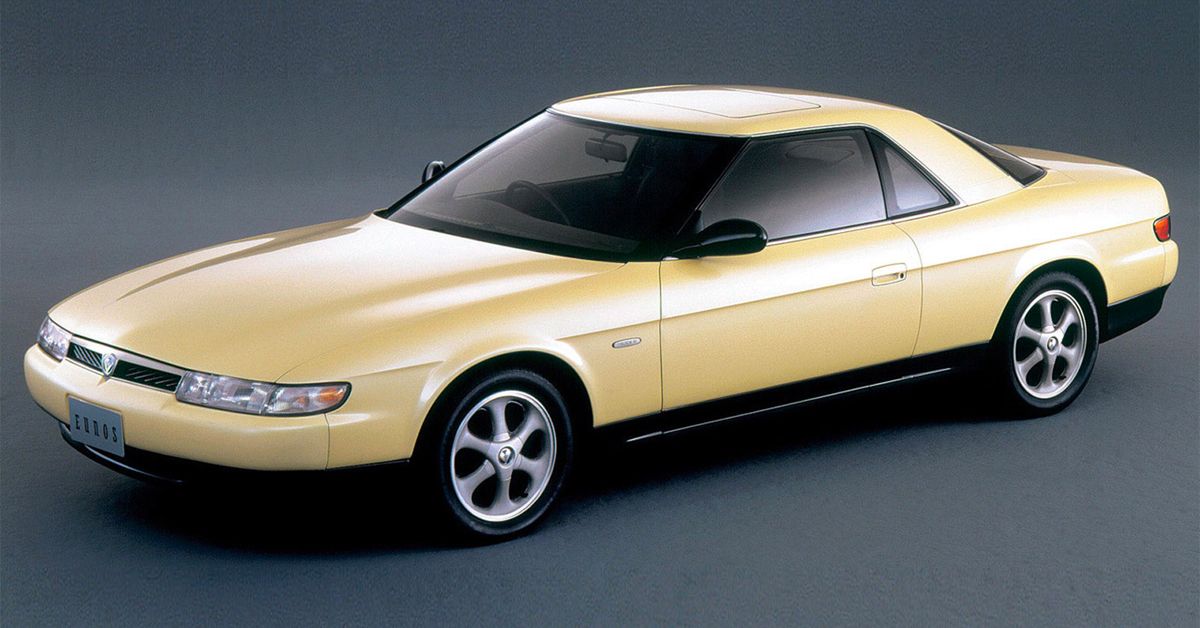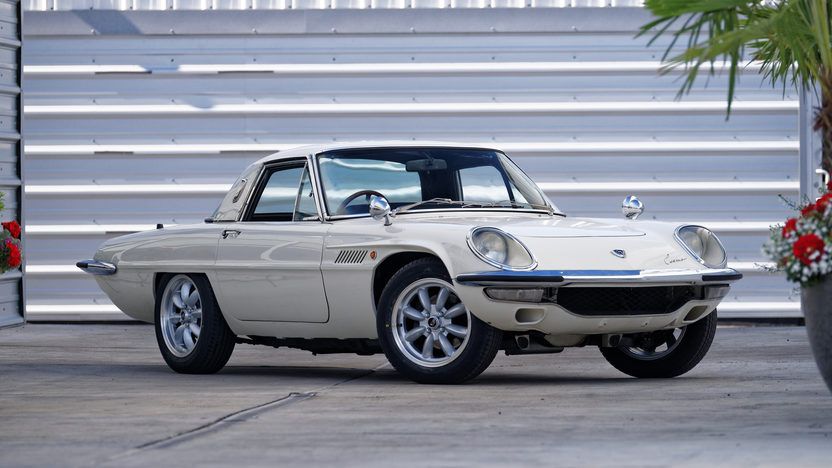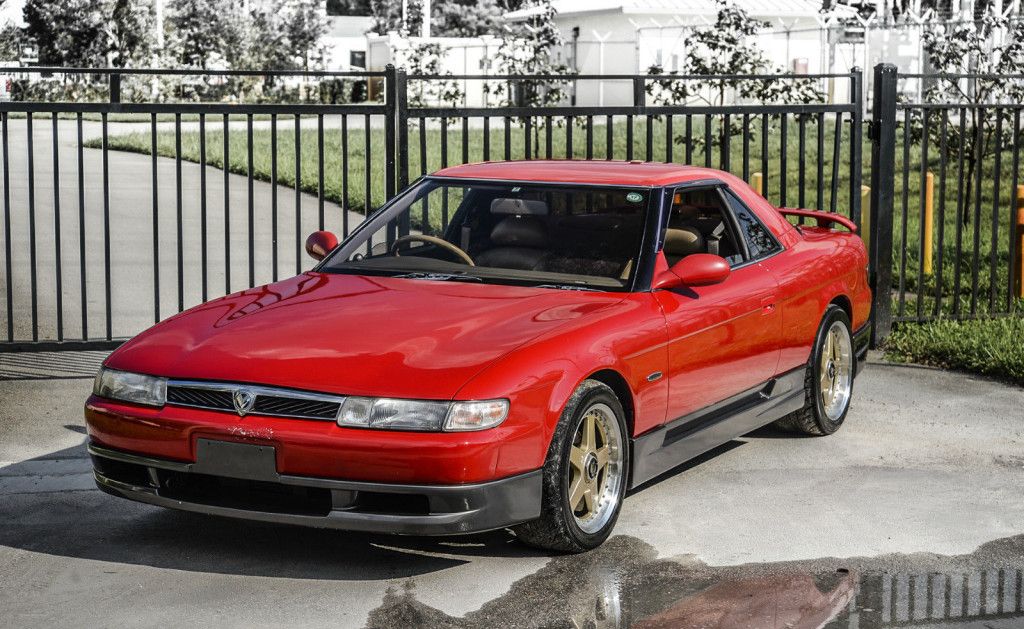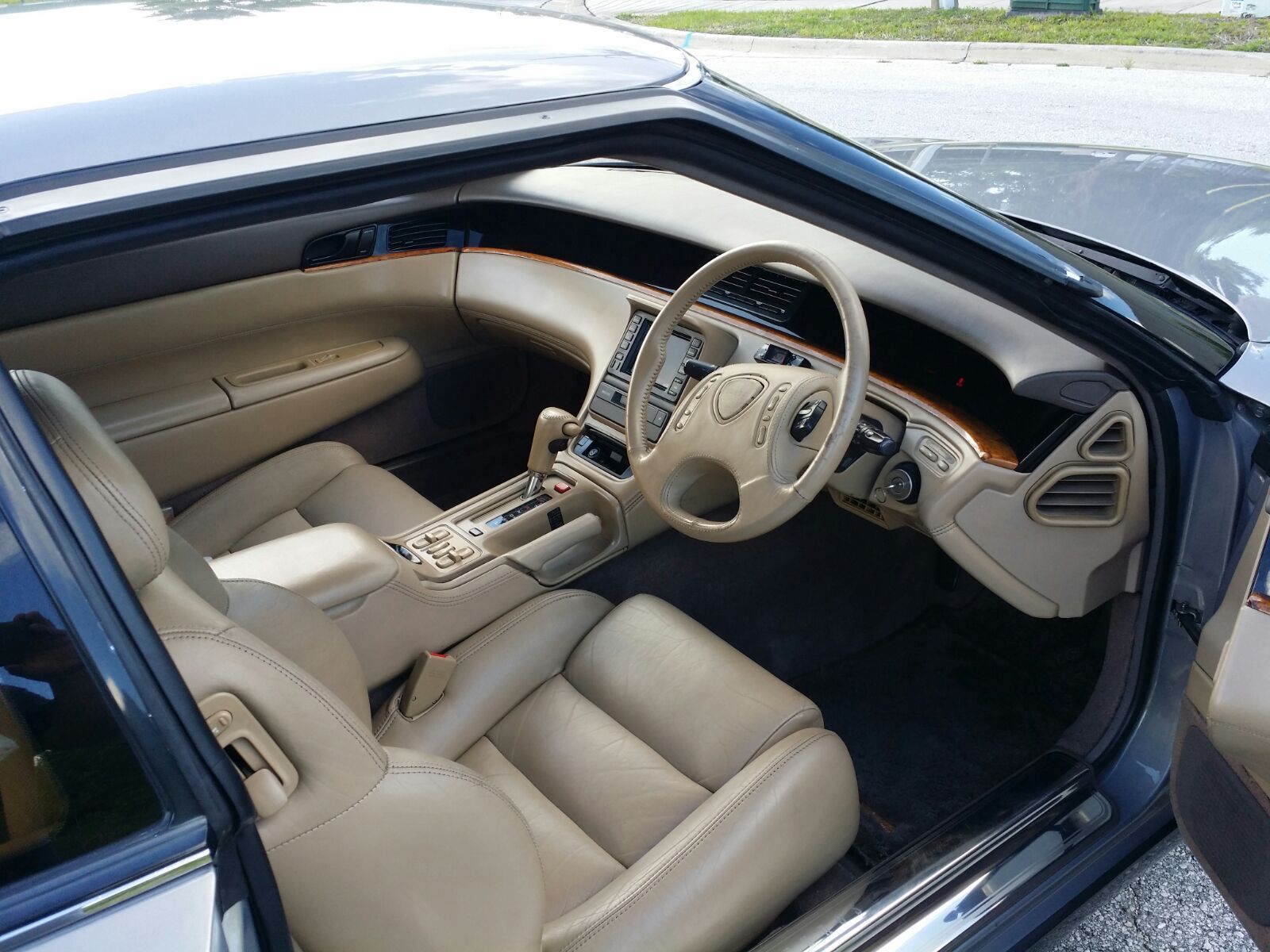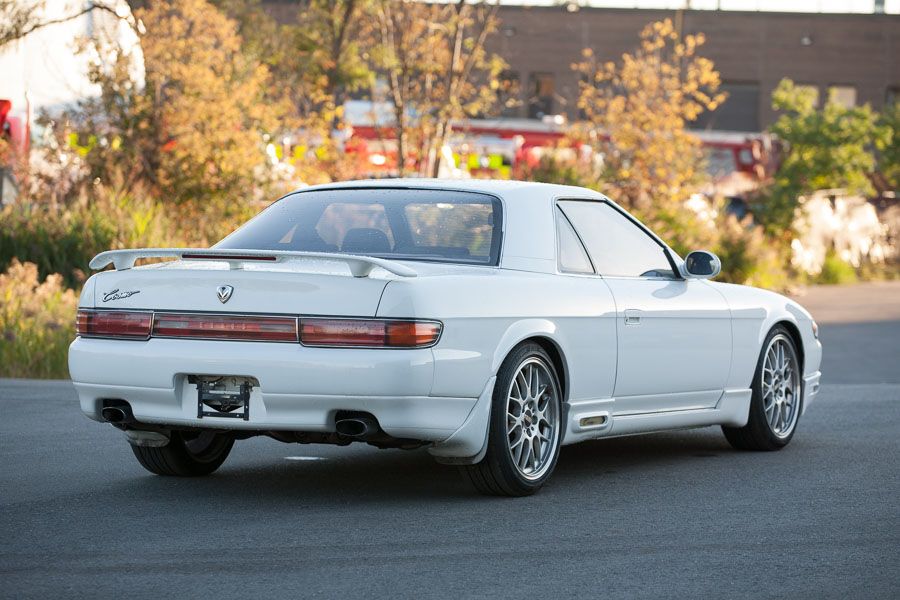Now a classic era and genre of car, the '90s saw Japanese sports cars reach new peaks, introducing still beloved legends to the streets with awesome styling, and wicked performance. When thinking of Mazda's contribution to this, the RX-7 is mainly what comes to mind. Legendary for their high-revving rotary power, the unique powerplant had its hits, but one of the best to use it ended up being remembered by very few outside Japan — the Eunos Cosmo.
An evolution of Mazda's most beautiful '60s classics, the Eunos Cosmo was created at the tail end of Japan's Bubble Economy and was packed with not only some of the most advanced tech, luxury, and features of the time, but also had an insane rotary engine that hasn’t been seen since. Not an all-out sports car, the Eunos Cosmo was a luxury-focused grand tourer that lasted from 1990 until 1996 and is much more than just a '90s JDM machine.
The Last Of The Cosmos
If the Cosmo in the Eunos Cosmo name sounds familiar, you're probably thinking of the iconic 1st generation Cosmo, which was one of the first rotary-powered road cars ever made, after the German NSU Wankel Spider. Not just groundbreaking, the Cosmo is a classic today for its spectacular looks, and help in proving the rotary’s viability in real-world driving — despite its quirks.
Debuting for sale in 1967 (like Toyota’s equally iconic 2000GT), the Cosmo lasted until 1972, evolving in ‘75 to the American design influenced Cosmo AP, and again in '81 into the boxy Cosmo HB. While cool, and still rotary-powered, the second and third-generation Cosmos weren’t as special as the first, and when the 4th gen, the Eunos Cosmo came out, they’d be almost mediocre compared to it. Debuting in 1990, the Eunos Cosmo, aka the Cosmo JC, was made with the direct purpose of being the “best ever rotary-powered car,” and would back that goal up with plenty of substance.
More on the Eunos name though, as it was a Japan-exclusive nameplate that marked Mazda’s high-end, sporty machines, including versions of their existing Familia commuter, the MX-5 Miata (sold as the Eunos Roadster), and then to top off that lineup, the Eunos Cosmo. Being the last car to bear the Cosmo name, the Eunos Cosmo would end the line with a bang, with a supremely luxurious interior, unique and powerful engine, as well as unheard of tech for the time, not to mention a design that’s subtle and refined.
The Best Of The Road Going Rotaries
Before getting into the luxury and tech virtues though, the Eunos Cosmo's engine is one of the most incredible and attention deserving aspects of the car. With the more iconic rotary beasts like the FD generation RX-7, the twin-turbo 2-rotor 13B was the biggest you could get stock, though that’s not a bad thing, as the tiny 1.3 L motor could lay out up to 280 hp (according to the Gentleman’s Agreement) at its best from the factory. Other serious rotaries Mazda made included the race-use only, Le Mans winning 26B 4-rotor, but the Eunos Cosmo was devised from the start to have the largest road-going rotary engine ever made up to that point.
Coming in at a small displacement of 2.0 L, the twin-turbo 20B 3-rotor that was a product of this goal doesn’t seem all that crazy on paper, but when considering the unique way rotaries produce power, this was considered to be equivalent to a V12. Even crazier than 3 rotors, the Eunos Cosmo also was the first use of a sequential twin-turbo system on a rotary engine, bestowing that system to both the 20B, as well as the cheaper 13B 2-rotor option offered in it - which would be used in the RX-7 FD 2 years after the Eunos Cosmo's debut.
While the 13B was still great, the 20B is the most epic it offered, also being the most powerful factory Japanese engine of the time with a mighty 280 hp - though was believed to be as powerful as 320 hp because of the Gentleman’s Agreement, which essentially was Japan's automakers coming together to limit claimed horsepower from the factory in 1989. Still powerful, the 13B made less than the RX-7 that would later use it, but still provided an ample 230 hp. With an RWD layout and 2 high-revving, high-power engines, the Eunos Cosmo could have been an unrestrained monster of a sports car, but to achieve their luxury goals was toned down, only including a 4-speed auto for transmission options. As well, handling also focused on the luxury side with a softer ride and easy steering, making cornering ability not all that great. 0-60 MPH took around 6.5 seconds, and the weight was a portly but relatively light for today 3,550 lbs.
Japanese Luxury At Its ‘90s Peak
As mentioned, the Eunos Cosmo’s goal of being the best rotary car was based more around luxury and quality rather than brutal sports car performance, one look at the interior makes this focus evident. Designed using a seriously cool wrap-around dashboard, with a hideaway gauge cluster for the driver, the Eunos Cosmo’s interior has aged far better than most other 30-year-old Japanese cars, to the point that it could almost pass as a modern design.
Being JDM though, the interior can be a bit small for Americans but still is an awesome one. The thickly padded leather seats are superbly plush and comfortable, leather trim throughout the interior accentuates the experience, and a whole host of features makes it a standout cockpit. What really makes the Cosmo special is its tech features, as this was the first production car to have a built-in GPS navigation system, amazingly advanced for 1990. Using a CRT touchscreen as an infotainment system as well, the Cosmo was ahead of its time, having everything from the GPS navigation, to the climate control, to the stereo, to even a TV system being controlled by that touchscreen.
Complimenting this, most features and options you’d expect in a 1990's luxury car were available on the Eunos Cosmo, from power-adjust seats as standard, an auto-retracting steering wheel to get in and out, auto up/down windows, a car phone, and 12 disk cd changer among other niceties. All the tech, leather, and general luxury would be moot if the Cosmo rode like a sports car though, and as mentioned, it was a sumptuous cruiser instead. Suspension is soft, and one unique aspect of it was that the rear used 4 shocks rather than 2. Taking this further, the 20B engine is unbelievably smooth, revving like butter to a 7k redline — a number limited by the transmission, as a 20B can rev to over 8k.
Pricing Then And Now
With Eunos Positioned as a Lexus/Infiniti style luxury sub-brand, the Cosmo was a luxurious and much more expensive car compared to its parent brand. But, unlike what Lexus and Infiniti typically did, a completely unique platform and engine were developed for the Cosmo, not sharing it with any normal models. Thanks to this and the plentiful advanced tech, prices were seriously high for the time, even in Japan’s bubble economy. Sold with a base price of $27,200 in 1990, the most basic Eunos Cosmo was the equivalent of $55,123 in today’s money and could balloon to $43,650 when optioned fully (around $88,461 today) making it a slightly cheaper competitor to luxury grand tourers like BMW’s 8-series, but without an established luxury nameplate attached to it - even if its true virtues were more than competitive in that field. Never sold outside Japan, just 8,875 Eunos Cosmos were sold over its model run, making it as rare as it is luxurious.
Expensive and rare as it was when new, the Eunos Cosmo is now a serious deal for a unique JDM classic, as 25 years have passed since its production ended and they can now be imported to the USA. With the 13B engine, a Eunos Cosmo today can be had for around $15,000 already imported, and the epic 3-rotor 20B version costs around $20,000 to $30,000. Compare that to an FD generation RX-7 from the time, which now costs $30,000 on the lowest end, and the Eunos Cosmo is an excellent value if you love rotaries but prefer a more subtle and luxurious experience.
Sources: Motortrend, Mazda, The Truth About Cars

